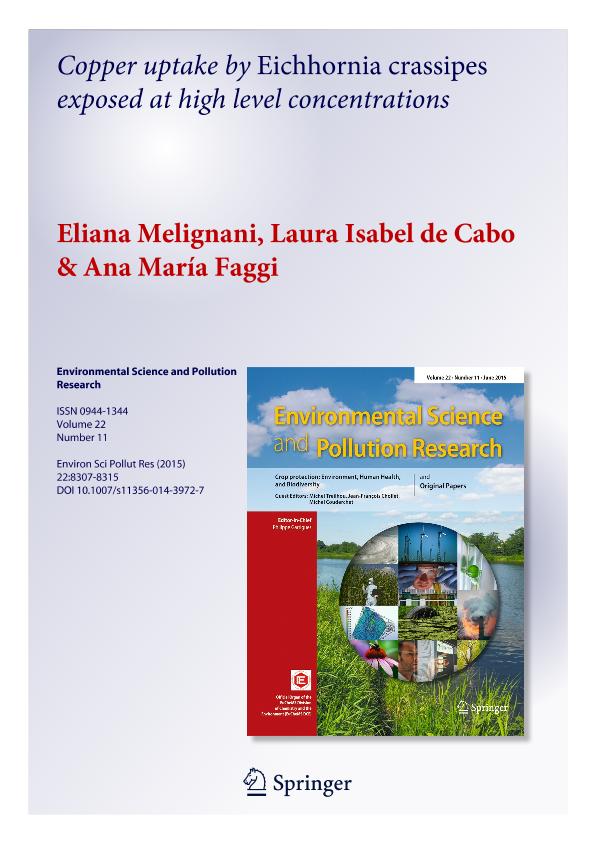Artículo
Copper uptake by Eichhornia crassipes exposed at high level concentrations
Fecha de publicación:
06/2015
Editorial:
Springer Heidelberg
Revista:
Environmental Science And Pollution Research
ISSN:
0944-1344
e-ISSN:
1614-7499
Idioma:
Inglés
Tipo de recurso:
Artículo publicado
Clasificación temática:
Resumen
The objective of this study was to assess the growth of water hyacinth (Eichhornia crassipes) and its ability to accumulate Cu from polluted water with high Cu concentrations and a mixture of other contaminants under short-term exposure, in order to use this species for the remediation of highly contaminated sites. Two hydroponic experiments were performed under greenhouse conditions for 7 days. One of them consisted of growing water hyacinth in Hoagland solution supplemented with 15 or 25 mg Cu/L and a control. The other one contained water hyacinth growing in polluted river water supplemented with 15 mg Cu/L and a control. Cu was accumulated principally in roots. The maximum Cu concentration was 23,387.2 mg/kg dw in the treatment of 25 mg Cu/L in Hoagland solution. Cu translocation from roots to leaves was low. The mixture of 15 mg Cu/L with polluted water did not appear to have toxic effects on the water hyacinth. This plant showed a remarkable uptake capacity under elevated Cu concentrations in a mixture of pollutants similar to pure industrial effluents in a short time of exposure. This result has not been reported before, to our knowledge. This species is suitable for phytoremediation of waters subject to discharge of mixed industrial effluents containing elevated Cu concentrations (≥15 mg Cu/L), as well as nutrient-rich domestic wastewaters.
Palabras clave:
Mixed Pollution
,
Macrophytes
,
Phytoremediation
,
Heavy Metals
,
Restoration
Archivos asociados
Licencia
Identificadores
Colecciones
Articulos(MACNBR)
Articulos de MUSEO ARG.DE CS.NAT "BERNARDINO RIVADAVIA"
Articulos de MUSEO ARG.DE CS.NAT "BERNARDINO RIVADAVIA"
Citación
Melignani, Eliana; de Cabo, Laura Isabel; Faggi, Ana Maria; Copper uptake by Eichhornia crassipes exposed at high level concentrations; Springer Heidelberg; Environmental Science And Pollution Research; 22; 11; 6-2015; 8307-8315
Compartir
Altmétricas




